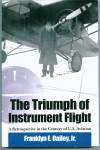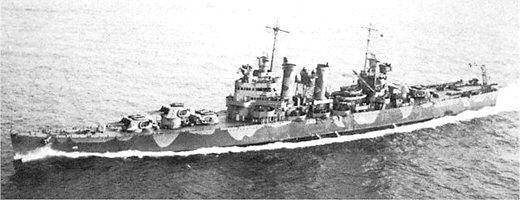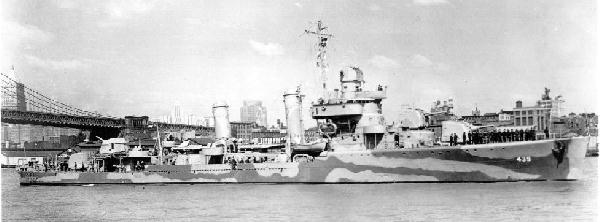
-------
.

Read The Triumph of Instrument Flight
- Navy Aerial Reconnaissance
- Warships at Morocco-1942
- Aircraft Carriers for Torch
- Battle for Morocco
- Bridging World Wars
- Supply and Support
- Husky, Palermo, Messina
- Bloody Salerno
- Luftwaffe Standoff Weapons
- Aircraft of World War II-"friendlies"
- Long "slog" at Anzio
- USS West Point AP23 War Cruise-part 1
- USS West Point AP23 War Cruise-part 2
- Singapore, Fateful Stop on "Joan's Journey"
- Update West Point
- Part I, Briggs on Casablanca, Sicily
- Part II, Briggs on Anzio
Casablanca: U.S. land, sea, and air forces battle French land, sea, air forces
Copyright 2011
Franklyn E. Dailey Jr., Capt. USNR (Ret), appears in episodes of the History Channel series, "Patton 360:" He is the author of "Joining the War at Sea 1939-1945," which provides detail on World War II invasions at Casablanca and Sicily recounted in Patton 360:.
Ships and Aircraft of World War II(many photos from U.S. Navy WW 2 Recognition Training Slide Set)
A 102-ship convoy left the eastern seaboard of the United States on October 23-24, 1942. They were Task Force 84. Two fueling-at-sea exercises, the second just off the Moroccan coast of North Africa, made it certain that all ships would be ready for battle when the landing phase of Operation TORCH began. Fuel is vital and in the second fuel day, in rough weather, a cruiser skipper was ordered by CTF 84 to be relieved of his command by his Executive Officer because his ship was making time-consuming futile passes at the tanker without taking aboard fuel.
My ship, the USS Edison DD-439 was in a destroyer group assigned to screen the 15 transports in the center task group, 12 APs with troops and their landing craft, 3 AKs with essential cargo they could put ashore in boats they had transported, and one tanker, the USS Winooski. These 16 transports were anchored in four columns, and four rows, the Winooski filling out the fourth row anchored furthest to seaward. (Too crammed with action to be covered here, but fully covered in the book shown at the upper left, the prottection of the transports broke down on two successive late day penetration of the anchorage by one U-boat on each occasion, with the complete loss of three transports, anddamage to the tanker Winooski and destroyer Hambleton.)When the first of the four destroyers assigned to lead landing craft in four boat lanes toward Fedhala harbor, encountered fire from French shore batteries (all manned by a French Navy that was prepared to fight), the voice code "BATTER UP" was announced, and the three day mini-war against French forces that resisted at Safi, Casablanca, and Mehedia November 8-11, 1942, began.

USS Brooklyn CL-40
The center thrust for the Western Naval Task Force was the port of Casablanca. At Safi, 150 miles south, two World War I stripped down four-piper destroyers, Bernadou and Cole, burst right into the harbor and unloaded U.S. Army assault troops over the dock. The mission there was to put ashore 260 tanks for General Patton and head them for Casablanca. At Mehedia, 50 miles north, another stripped down U.S. four-piper destroyer, the USS Dallas, burst through the barrier netting, went up river, and landed U.S. Army Rangers that took the major airfield at Port Lyautey. One of the CVE aircraft carriers was loaded with P-40 Warhawks that would fly off and land at this airfield and provide air defense for Casablanca when taken.
In the three-day TORCH shooting stage (in essence a series of impromptu ship-to-ship battle engagements) off Casablanca, the light cruiser Brooklyn, commissioned in 1937 and shown above, would often be paired with two screening destroyers. In addition to shore fire to knock out defense artillery, many firing episodes occurred when French cruisers and destroyers would attempt to sortie from the Casablanca and head northeast toward the anchored transports that were disgorging their assault troops in landing craft bound toward the nearby port of Fedhala. Usually, one of the cruiser's SOC scout aircraft would give the first warning, and then Brooklyn would "requisition" a couple of destroyers not otherwise engaged and head toward Casablanca to engage the French warships. The Brooklyns, and we'll see a lot more of them in this series, had 15 six-inch guns. They were designed to counter the Japanese Mogami-class cruisers.
My ship, the destroyer Edison, would occasionally be called upon as fire support for advancing troops. We also did some "shoots" during the French ship sorties when screening the heavy cruiser USS Augusta CA-31 and occasionally were called upon to shoot at specific defense batteries ashore. Edison was a 1630-ton Benson-class destroyer, commissioned early in 1941. She fired 350 rounds of high capacity 5" shells at shore targets and French light cruiser and destroyer sorties at Casablanca, about the median for the 26 destroyers involved. The U.S. destroyers Ludlow, Wilkes and Kearny were the heavy shooters during the three-day action.

USS Edison DD-439
Shown steaming past the Brooklyn Bridge in New York's East River, Edison's crew is in dress blues ready for shore leave. She was my home for 27 months and for the final 10 months aboard, I was her Gunnery Officer for Anzio and Southern France. We had four five-inch 38 cal. dual-purpose guns, a General Electric Mark 37 Director, a Mark I Sperry Stable Element, and a Ford Instrument Mark I Analog Computer. Atop the Director (the highest structure forward except for the mast) was a Westinghouse FD Fire Control Radar. The Director had a stereo rangefinder which was our principal ranging device. Chief Fire Controlman Jackson operated the rangefinder when we were at battle stations. He had the most curved eyeballs I had ever seen and could put our first 5" salvo right on a Dornier-217 bomber. For other ordnance, the ship carried several 20 mm Swiss Oerlikon AA guns and two quad 40mm Swedish Bofors AA guns. In addition we had 600 pound depth charges astern in two roll-off racks and 300 pound depth charges in six K-guns along the side that could be thrown outward into the air. We also had a Mk. I Torpedo Director for the two quintuple tube mounts, mounting 10 ready-to-go 21"' torpedoes.
The French defender aircraft centered their interest on our troops making landings. U.S. combat aircraft attempted to intervene, to destroy French aircraft on the ground at their aerdromes, and let the warships duel with the warships. Some French submarines were destroyed by U.S. aircraft but some managed to escape the harbor. The battleship USS Massachusetts repeatedly dueled the French battleship Jean Bart tied up to a wharf in the harbor. Jean Bart would also shoot at any major ship that ventured within her range. I saw her put a perfect two-gun straddle on the USS Augusta's stern. In most after-battle assessments, U.S. guns did not destroy French guns but put their fire control systems out of action.